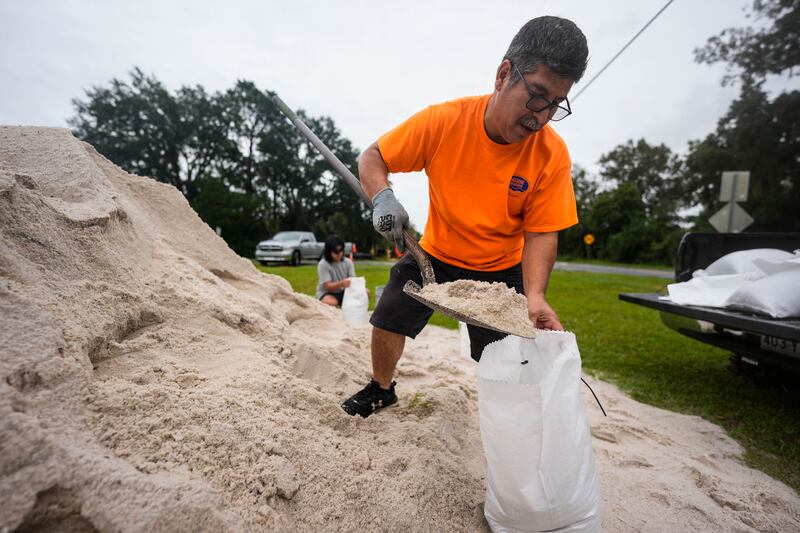After days of brewing in the Gulf of Mexico, Hurricane Helene is slated to touch down along Florida’s Big Bend coast on Thursday evening as a Category 4 hurricane.
The Florida Big Bend, a particular slice of the state’s northwestern coast where Florida’s panhandle region begins to curve around the Gulf of Mexico and transition into the state’s distinct peninsula, was already being hit with Helene’s “outer rainbands” early Thursday morning, according to the National Weather Service.
The Big Bend region, specifically Apalachee Bay, faces a catastrophic, “potentially unsurvivable storm surge” as early as Thursday afternoon, per the NWS.
A storm surge, according to the organization, is “an abnormal rise in sea level accompanying a hurricane or other intense storm, whose height is the difference between the observed level of the sea surface and the level that would have occurred in the absence of the cyclone. Storm surge is usually estimated by subtracting the normal or astronomic tide from the observed storm tide.” The NWS reports that storm surges are “the most dangerous hazard associated with Hurricanes.” Some areas across the bay could be hit with up to 20 feet of storm surge.
Helene is expected to move quickly after touching down, per the NWS, but its heavy rainfall will still bring with it a significant risk for flash flooding across the region. With the NWS classifying Helene as a Major Category 4 hurricane, wind speeds can reach 130 to 156 mph. “Homes could see severe damage with rooves and walls partially or totally torn off. Most trees and power poles would not stay upright and residential areas could be isolated,” 10 Tampa Bay reports.
The cascading effects of Helene won’t solely be massive rainfall, however. “Life-threatening rainfall flooding, damaging winds and some tornadoes will push inland in the Southeast,” according to The Weather Channel.
What is the difference between a hurricane and tropical storm?
Hurricane Helene, which was upgraded from a tropical storm to a hurricane, is expected to be the strongest storm to hit the United States in the 2024 season, the Deseret News previously reported. Helene is the eighth named storm of the above-average hurricane season.
According to National Weather Service definitions, a tropical storm is “a low pressure area with wind speeds increasing to 39-73 mph,” and is given a name at this stage. A hurricane is declared “when a tropical storm reaches winds of 74 mph or greater,” the U.S. Navy’s website reads.

Preparing for Hurricane Helene
A Thursday public advisory on Helene from the National Hurricane Center said that “preparations to protect life and property should be rushed to completion.”
Across the southeastern U.S., residents are stocking up on fuel, water and food, while some are filling up sandbags or hunkering down in hurricane shelters.
Sixty-one of Florida’s 67 counties are under a state of emergency, and several counties along the state’s west and northwestern coasts have already given evacuation orders to residents. At a news conference in Tallahassee Wednesday night, Florida Gov. Ron DeSantis said, “the eye of the storm is coming in this region,” NBC News reports.
President Joe Biden, who approved an emergency declaration for Florida earlier this week, approved a declaration for neighboring state Georgia Thursday morning; Biden also approved North Carolina for an emergency declaration as well.
“Lesser tropical storm warnings as far north as North Carolina” were posted by the hurricane center, which “warned that much of the region could experience prolonged power outages, toppled trees and dangerous flooding,” according to The Associated Press.
“Federal authorities have positioned generators, food and water, along with search-and-rescue and power restoration teams. And Florida officials have sent more than 130 generators to gas stations to ensure that people will be able to fill their cars after the storm, and extra fuel has been shipped into Florida,” according to DeSantis, per AP.


